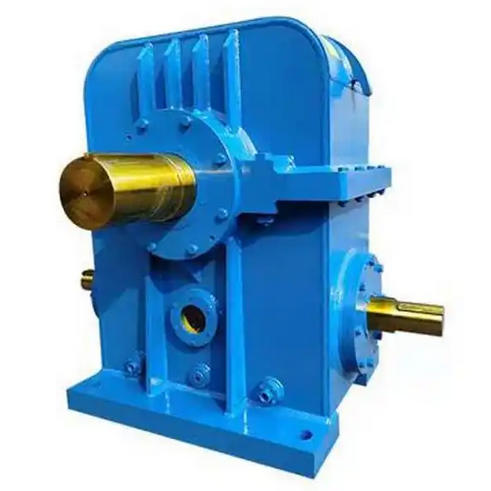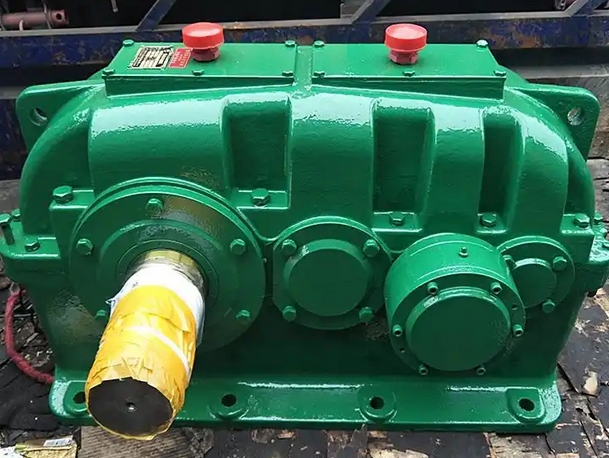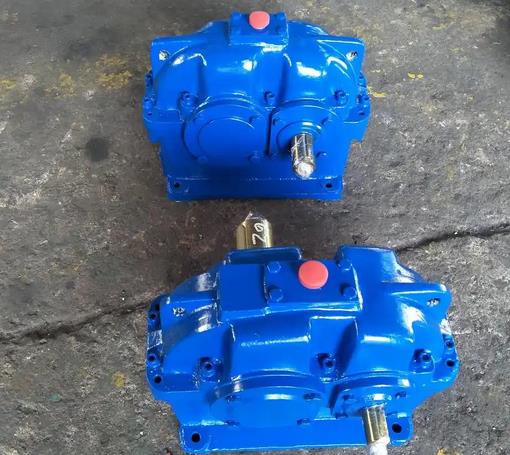Introduce the advantages and disadvantages of PWU160-35.5-I worm gear reducer
PWU160-35.5-I worm gear reducer is a common reduction transmission device. The following is an introduction to its advantages and disadvantages:advantage
Large reduction ratio and compact structure: PWU160-35.5-I worm gear reducer can achieve a single-stage reduction ratio of 35.5, which can meet large reduction ratio requirements with a simple structure. Meanwhile, its compact structure, small size, and light weight make it suitable for situations with limited installation space.
High output torque: Due to the inclined design of the worm gear, the output shaft of this reducer can generate a large torque, making it suitable for work environments that require high torque and low speed, such as lifting machinery, mixing equipment, etc.
Equipped with self-locking function: When the lead angle of the worm is less than the friction angle between the worm wheel and the worm meshing surface, the worm wheel cannot drive the worm in reverse, and self-locking can be achieved. This feature is crucial in scenarios where it is necessary to prevent load reversal, such as when the crane arm is hovering, to ensure that heavy objects do not fall due to gravity.
Smooth transmission and low noise: When the worm gear is engaged, the helical teeth of the worm gear gradually contact and detach from the teeth of the worm gear, with a large contact area and small impact. The transmission process is smooth, and the vibration and noise are significantly lower than those of the gear reducer, making it suitable for scenarios with high requirements for smooth operation.

Easy installation and maintenance: Its structure is relatively simple, with main components including worm gear, worm wheel, housing, bearings, etc., making installation flexible and lightweight. Daily maintenance mainly involves replacing lubricating oil and inspecting seals, with lower requirements for operational skills and more controllable maintenance costs.
shortcoming
Low transmission efficiency: The sliding friction transmission mechanism of worm gear leads to significant energy loss, and the single-stage transmission efficiency is generally in the range of 60% -90%. When the speed ratio exceeds 20:1, the efficiency curve shows a steep decrease, which may result in significant additional energy loss during continuous operation.
High heat generation: Due to the relatively high sliding speed between the meshing teeth, a large amount of heat is generated by friction. Under full load conditions, the temperature of the box can reach 70-90 ℃. When operating in high-temperature environments, it is easier to exceed the temperature resistance threshold of the lubricant, which may affect the performance and service life of the gearbox.
Weak axial bearing capacity: The structural characteristics of this type of reducer determine that its axial bearing capacity is relatively weak. When the radial load exceeds 15% of the rated value, the bearing life may be shortened to 60% of the design value. In the impact load scenario, the average time between failures is relatively short.
Rapid precision degradation: The meshing clearance will expand nonlinearly with wear, and after running for a certain period of time, the clearance will increase, which may cause a decrease in positioning repeatability accuracy. In applications that require precise control, regular clearance adjustment is necessary.



